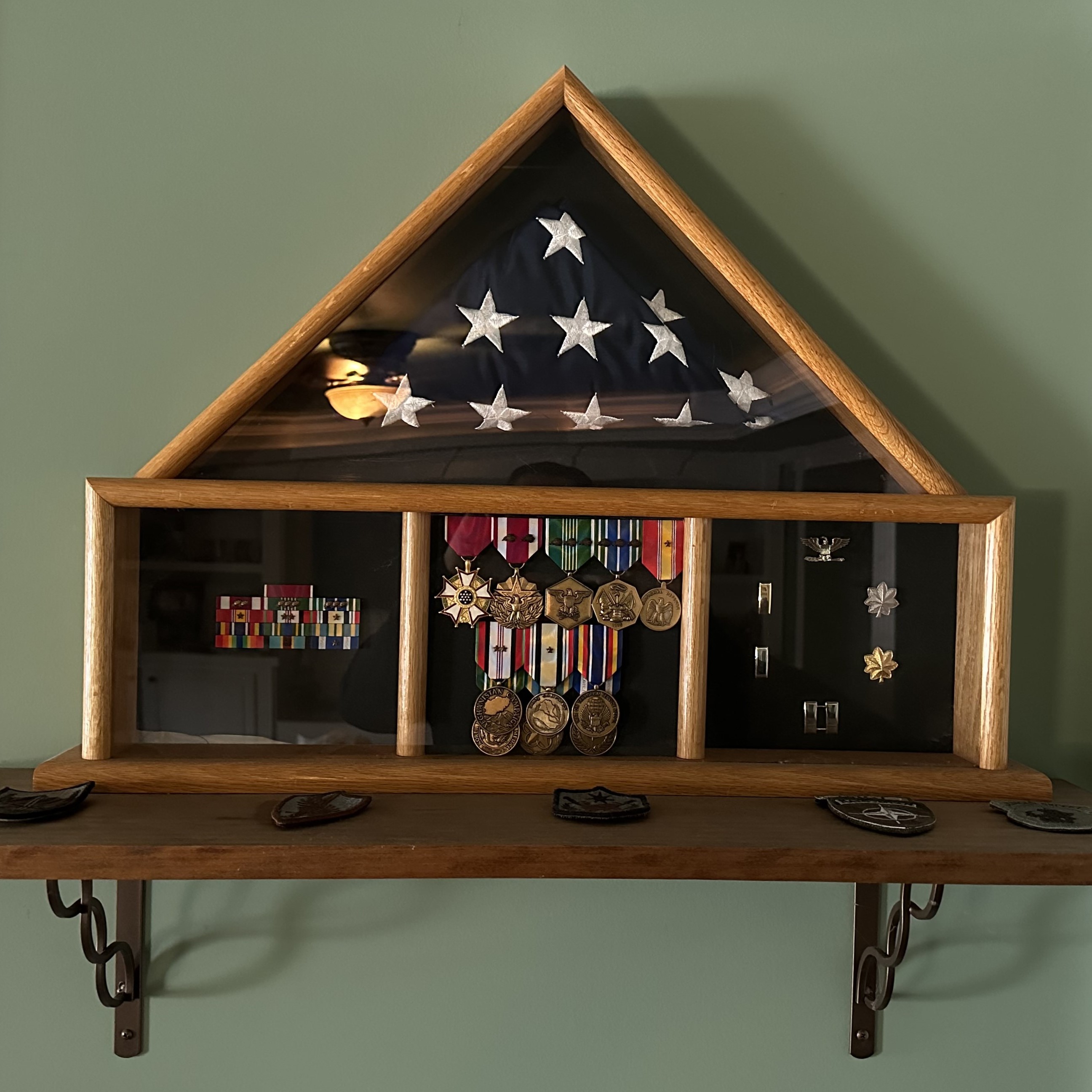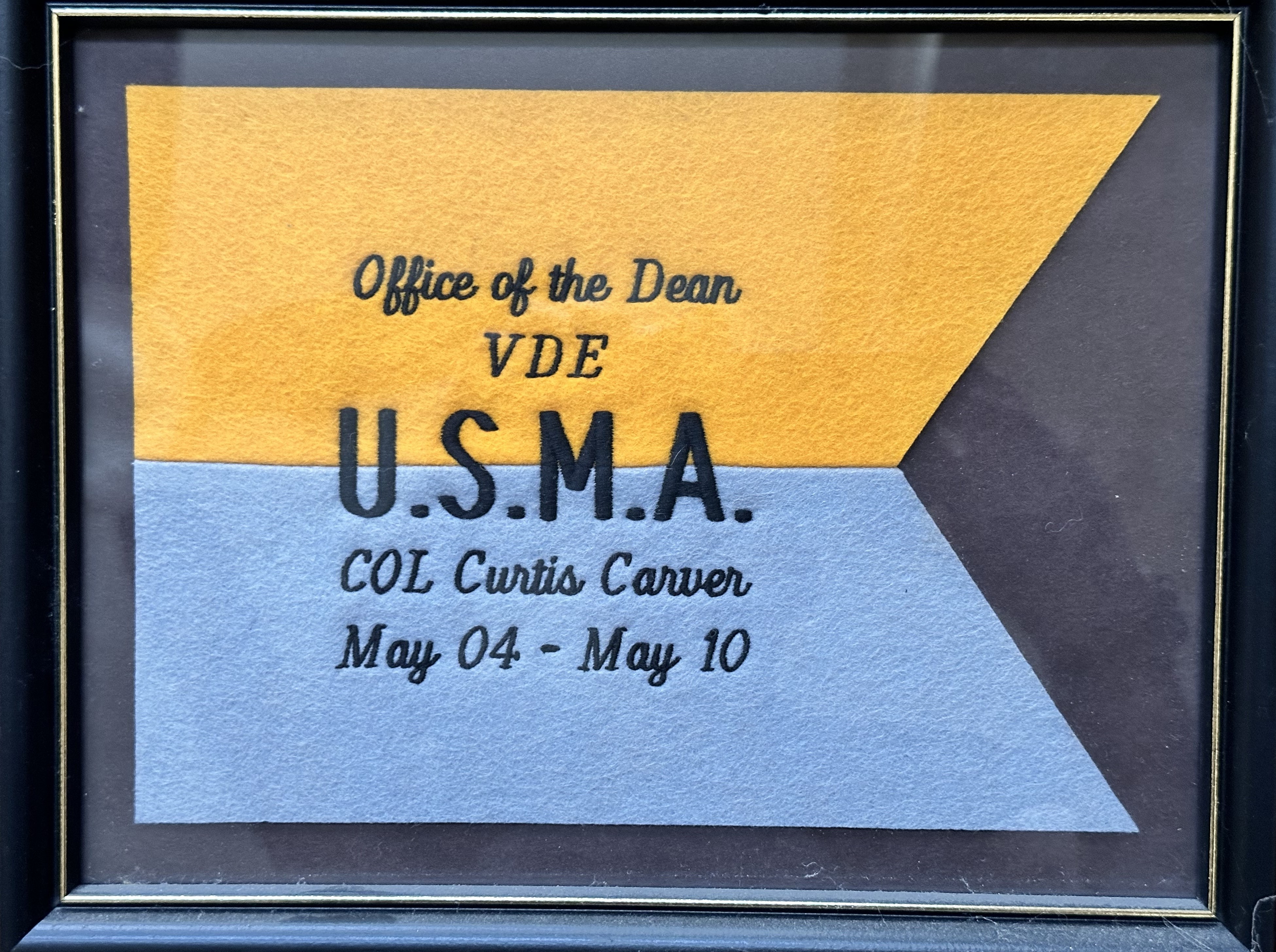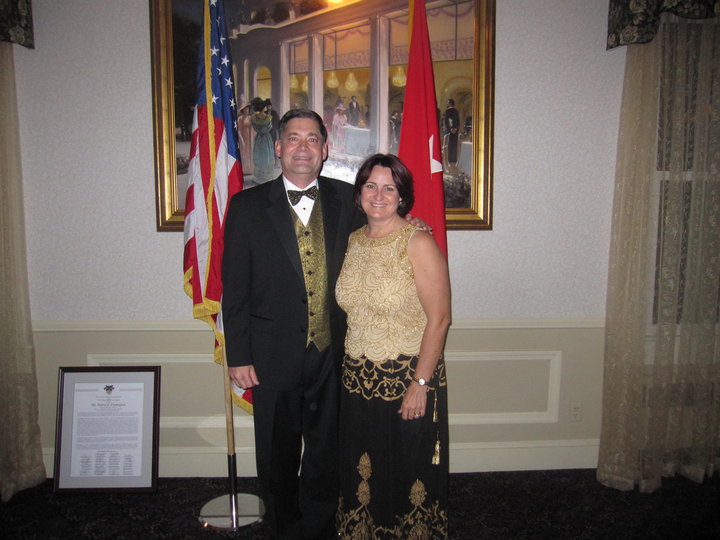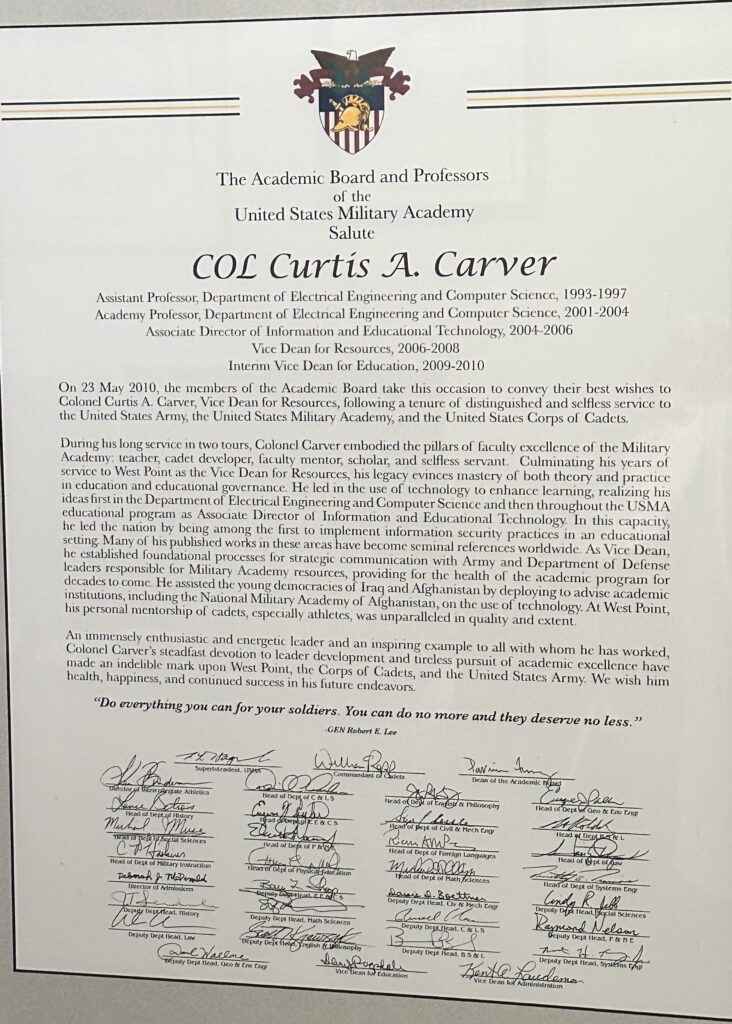
For those unfamiliar with the military, let me orient you on the classic military retirement display (image above) that you might see in a retiree’s house or office. Starting at the top is the American flag. In this case, it is an American flag that was flown in Afghanistan and Iraq while I was deployed there in combat. The lower panel on the left shows the ribbons I would wear on Army uniform dress coat. For the ribbons and medals, if you see oak leaves or stars in the middle of the ribbon/medal, it means I earned that medal multiple times. The center panel show the medals I earned on active duty. The medals are full size which is great for seeing the details of the medal but unlike the British, Americans normally wear miniature versions of the medals. You can see those miniature versions of the medals on the Military page in the bottom left picture. The far right panel is the rank I obtained. The first three ranks (2LT, 1LT, and CPT) are old school and were sent to me by my Uncle Bud on my mother’s side. Finally, the patches along the bottom are the unit patches I wore in combat (first four) and my jungle expert badge.

As I returned from my sabbatical, I had a meeting with the Superintendent and he asked me to examine the West Point academic program based on my experiences with the ACE program. My friend and colleague Dan Ragsdale was headed to sabbatical at Rice University so I stood in for him as Vice Dean for Education. Colonel Tom Kastner continued as the Vice Dean for Resources and Dr. Kent Lauderman as Vice Dean for Student Success.

While I enjoyed the role of Vice Dean for Education and working for BG Finnegan again, it became clear that my time at West Point was coming to an end. While I could return to my role as Vice Dean for Resources, I had grown a lot during my sabbatical. That growth would come to an end. I could return to the Department of Electrical Engineering and Computer Science and compete for the deputy head position, wait five years or more, and then become the Department head. There would be growth in that path and prestige as I would become one of the 23 Professors, United States Military Academy. I would retire as a Brigadier General which is a rarified rank which would carry a certain degree of prestige for the rest of my life. On the negative side, growth would be slow and admittedly limited. It was a hard decision but it seemed like it was right time to retire from the military after 27 years, take some risk and grow.
I applied for the job of Vice Chancellor for Information Technology for the University System of Georgia in September 2009 as interview practice and exploration of my opportunities. It was a great opportunity but it seemed too early in the process. The interviews went well and surprisingly to me, I was offered the position in October. I talked with BG Finnegan and as always, he offered wise counsel. I would accept the position and burn my leave working in Georgia 2 weeks while working the Vice Dean for Resources position for two weeks. It would be a challenging transition but one that fully tested my leadership potential. I made that offer to the Senior Vice Chancellor Susan Herbst and she accepted. She was taking some risk in me and I remain very grateful to Susan for giving me this opportunity.
From October 2009 until May 2010, I worked two fulltime jobs flying out of White Plains every two weeks. I do not recommend this approach for anyone. The Vice Dean for Education and Vice Chancellor for IT roles were two full time roles. The Vice Dean role was strategic a the Military Academy adapted to the pressures of a nation at war fighting on two fronts. How does West Point balance the immediate needs of the Army fighting two wars versus the long term needs of the Army to grow strategic leaders?
The Vice Chancellor for IT role was a turnaround position as the previous Vice Chancellor had been fired. There were deep cultural challenges in the IT organization and in the system office. It was a time of regression in the world following the meltdown of 2008. Could I deliver immediate wins so as to build trust in the system office while navigating the politics of the system office while fixing the cultural challenges within the IT organization?
By March of 2010, I was pretty burned out and took real leave from both jobs. West Point and the Pentagon had been engaged in spirited discussions on how to expand the number of graduates with no additional resources from the Army without compromising the quality of the graduates. A very difficult balancing act indeed. The Vice Chancellor role had me inheriting more than 40 audit findings that had to be addressed. One suborganization simply could not be redeemed and a reduction in force would have to take place to remove all employees. There had not been a technology strategic plan in years. This was a similar situation where I was being asked to take significant budget cuts while making significant enhancements in service.
I had won National CIO of the Year from the Evanta Group and the prize associated with the win was a week at Turtle Island. I really needed a week away. The week at Turtle Island came at the right time and in March 2009, we took the week off and Sarah Goss’ mom, Barbara, “supermom”, came up from Pennsylvania to spoil, I mean watch, our kids.
Eileen and I came back refreshed and ready for retiring from the Army after 27 years. It had been a great run but it was time for the next generation of leaders for West Point and the Army. Haig Hall in Jefferson Library had been reserved for the retirements of general officers but West Point made an exception for me given my modest role in building the library. My parents and family joined me at West Point as I retired with a packed Haig Room. Our family was there, our cadets were there, the women’s soccer team was there. It was a fitting end of my Army career.
There is a part of the West Point alma mater that always resonated with me as a young man.
“And when our work is done, Our course on earth is run,
West Point Alma Mater
May it be said, “Well done”, Be thou at peace.”
I was at peace with my successes and failures at West Point. I had given it everything I had and left West Point better than I found it. It was time for the next chapter in my life – the life of a chief information officer.


